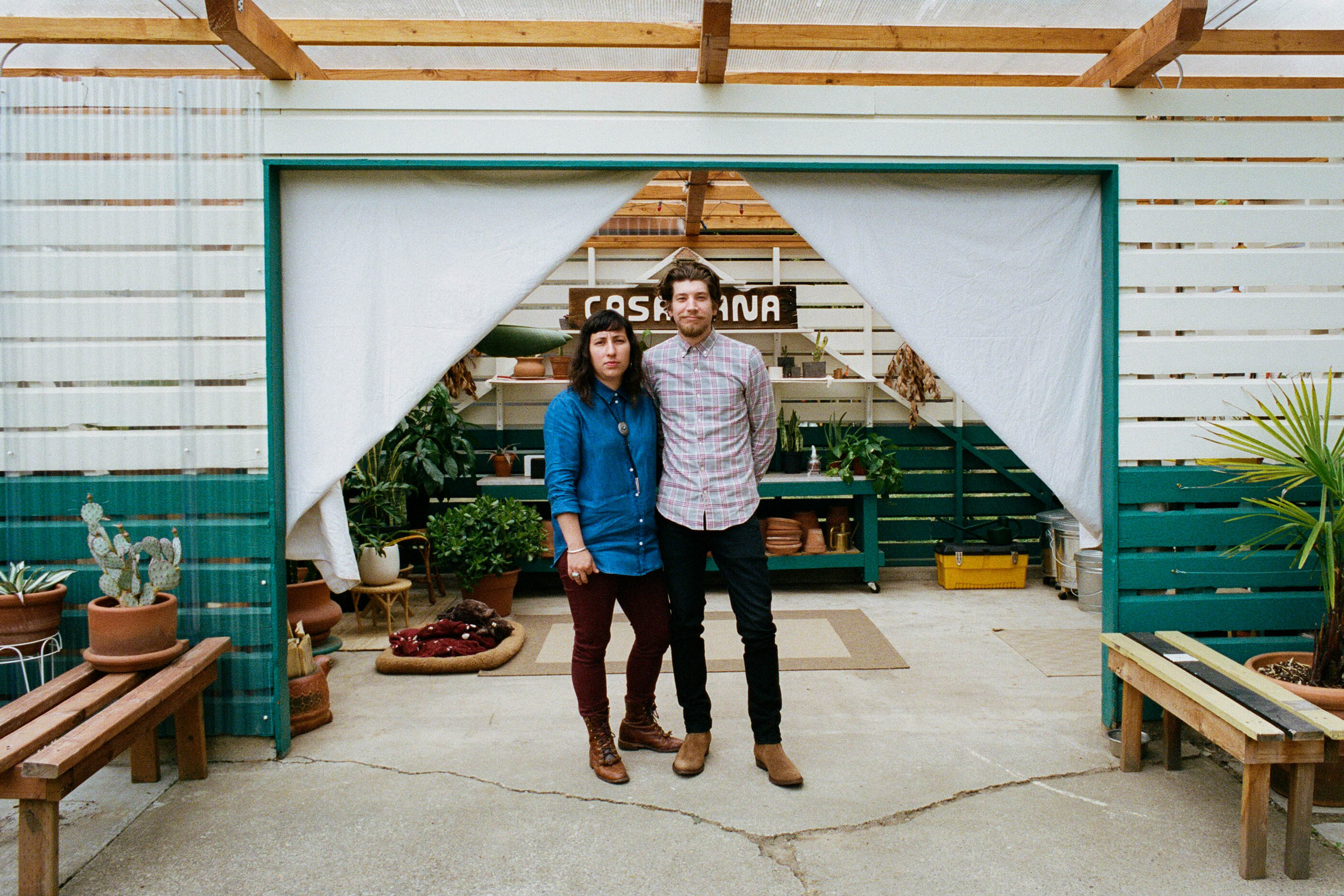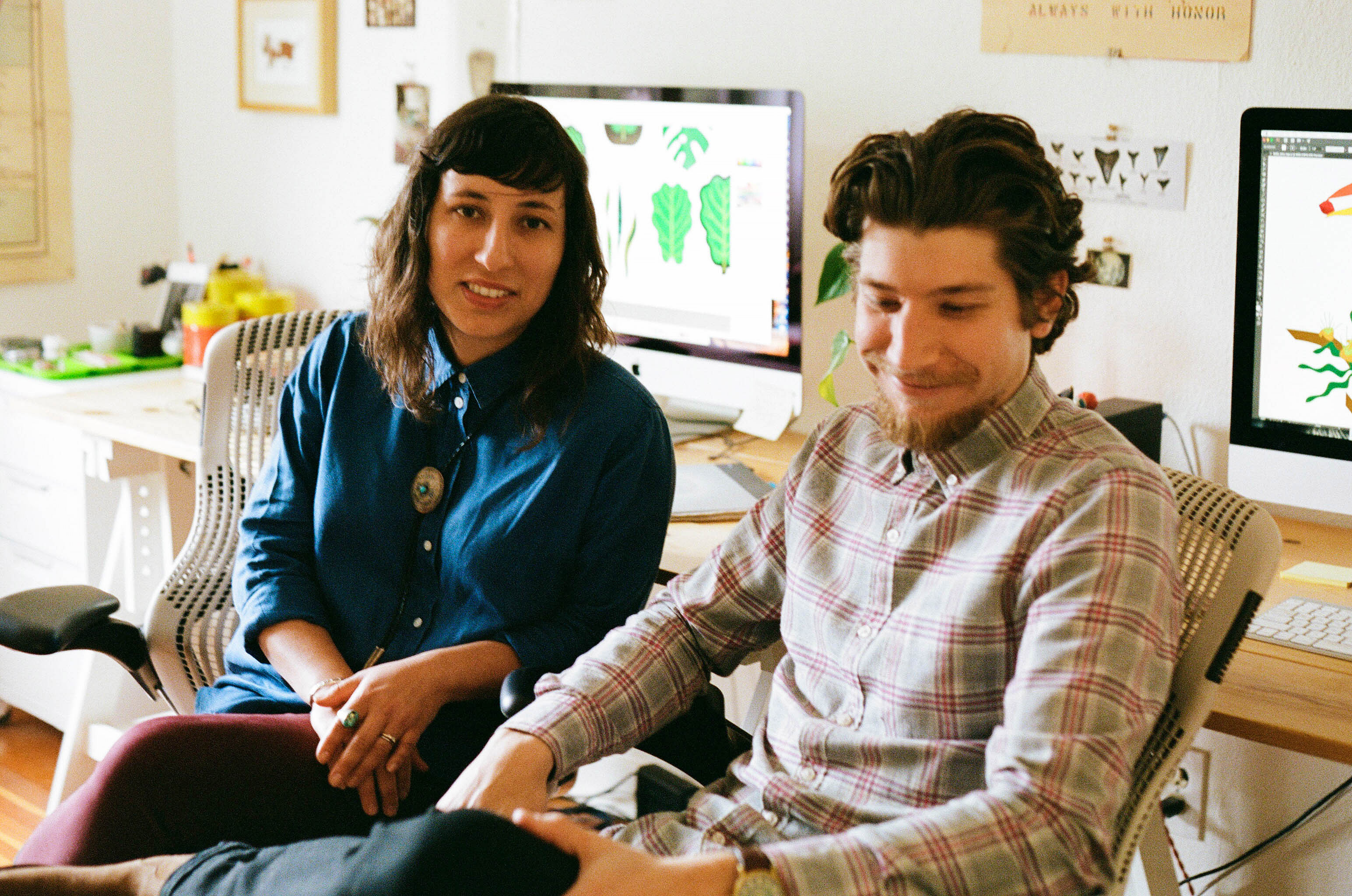
- Interview by Brandi Katherine Herrera June 26, 2018
- Photography by Amanda Leigh Smith
Always With Honor
- designer
- illustrator
- entrepreneur
Portland, Oregon-based designers Elsa and Tyler Lang, AKA Always With Honor, were an ideal match from the start. Though they grew up in seemingly disparate worlds—in Colombia and Florida, and in Vermont—they share a number of similar interests and experiences that continue to inform their lives and creative work today. Here, the duo talks with us about childhood afternoons spent perfecting their favorite sports-team logos, falling in love with the flora and fauna surrounding their homes, meeting in design school and where their path of collaboration has taken them since, and how they manage to remain balanced as a creative couple who lives, works, and enjoys downtime together pretty much 24/7.
Elsa, you were born in Colombia and raised in Florida?
ELSA: Until I was about 12 years old, I spent half my childhood in Colombia, and half in Florida.
And Tyler, you grew up in small-town Vermont?
TYLER: I was actually born in big-town Vermont (Burlington), and raised in St. Albans.
In what ways do you think your respective upbringings informed your ideas about creativity, art, and design?
T: I’ve been into art as long as I can remember. I’m not sure if that’s related to growing up in Vermont, though, I do think my family had an influence. My dad’s side of the family is artistic—his aunt would create different handmade Christmas ornaments every year, and give one to us. One year, she bought an old, broken piano and tore it apart to make little creatures out of the piano keys. They were the coolest things.
Even though my dad isn’t artistic, he’s still a creative thinker and a damn good guitarist. And when my sister and I would stay home after school, my mom would leave out crafts to keep us busy. We would watch tv sometimes, too, but when Saved by the Bell was a repeat, it was craft time! (laughing)
That’s awesome. (laughing) Elsa, how about you?
E: There isn’t a lot of creativity on my mother’s side; they’re small-town farmers, and art is about the least important thing to them. On my father’s side, there’s much more creativity in the traditional sense, but he wasn’t in the picture after I was 10. That said, art and design has always been a part of that culture. Pre Columbian art is everywhere, though no one really sees it as art. It’s almost as if it’s just a part of the fabric of the country. I grew up exposed to it every day, but didn’t necessarily think it was special; it was just there, in the background. But as I get older, I can see that it was likely an influence.
It’s funny, because you often hear that with immigrant families there’s this pressure to become a doctor or a lawyer…
It’s such a common story.
E: It is. But my mom was very supportive of anything I did. She’d say, “You’re going to be a doctor, or a dentist!” But it was more of a joke than anything. In the back of her mind, I think she always knew I was going to end up doing something more creative, or less expected. When I told her that I wanted to go to art school, she never said anything to discourage that.
So while she didn’t necessarily drive my creativity, she’s always supported it. And now, I think she understands more than ever what it is that Tyler and I do.
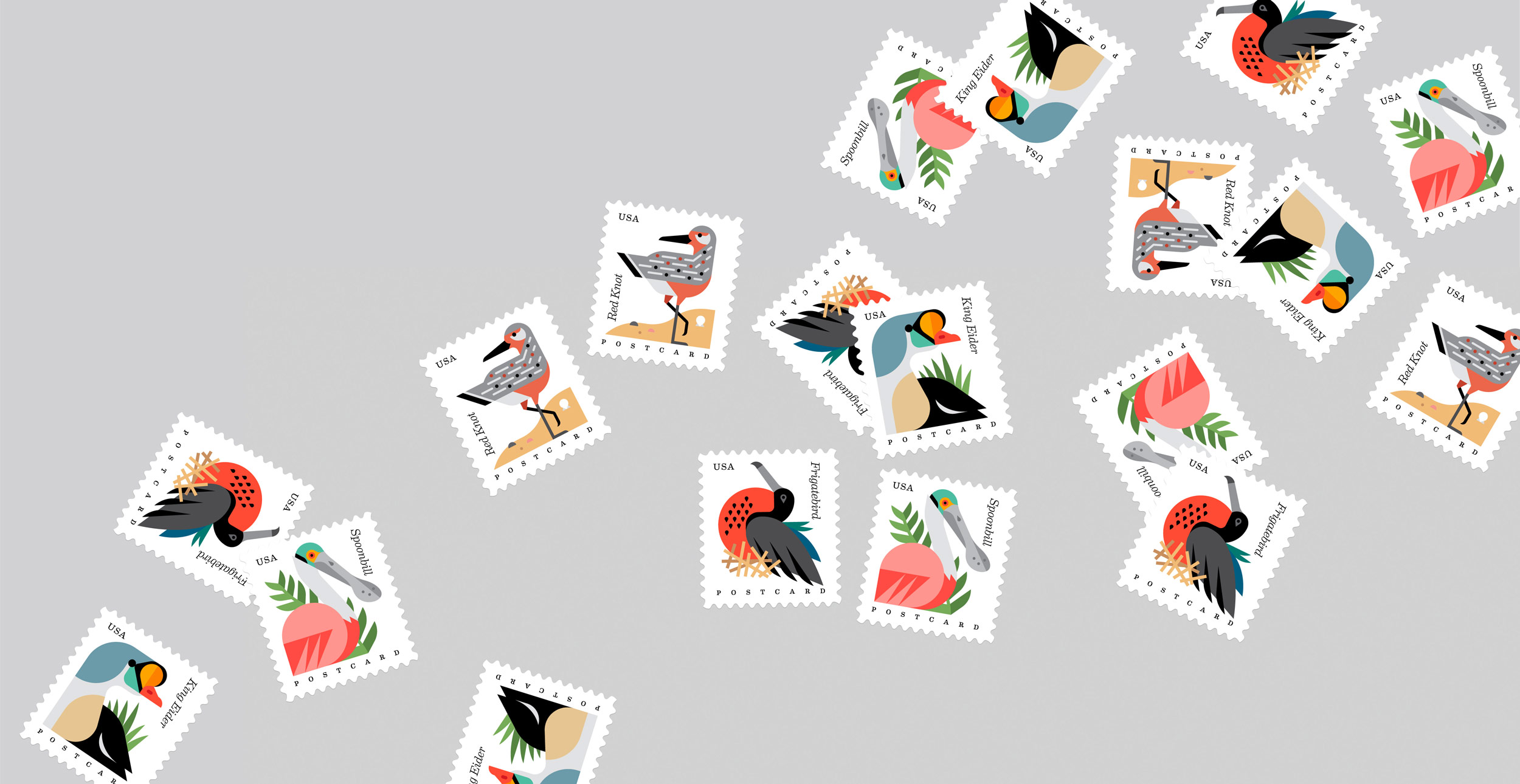
“Growing up in a small place like I did, you don’t regularly come across professional designers like you might in a bigger city…you don’t really have much context for what a graphic designer or illustrator does, and how they’re able to make a living.” /Tyler
Now that she can see the tangible results of your creativity.
E: Exactly.
T: We’ve both been really lucky to have such supportive families. My parents never once hesitated about my choice to pursue art. Actually, they were the ones that encouraged me to pursue it as a career, because they could see how much I enjoyed it.
I didn’t really know what I wanted to do, even after high school. Growing up in a small place like I did, you don’t regularly come across professional designers like you might in a bigger city. So you don’t really have much context for what a graphic designer or illustrator does, and how they’re able to make a living. From my parents’ perspective, it could easily have seemed like much more of a risk.
It sounds there were a number of similarities in your experiences. Your parents were both so supportive, even if what you chose to pursue was outside the scope of what they were used to. Tyler, you had more direct artistic influence from several of your more creative family members. Elsa, what in particular led you to attend an arts high school, and pursue a degree in design after that?
E: One of my earliest memories is of making greeting cards as a child. It was my first business! (laughing) My father would bring home reams of Scantron printer paper, and I would draw all over them. Art, in that way, was just something I always did. It was never anything serious, and there was never any real deep meaning. It was just something I was interested in, and then began to figure out that I was also good at.
One of my teachers noticed that I never painted very traditionally. It was always with these hard angles and graphic shapes, so she told me I should maybe consider graphic design. And I thought, Graphic design? I’ll have to go look that up. (laughing)
“One of my teachers noticed that I never painted very traditionally. It was always with these hard angles and graphic shapes, so she told me I should maybe consider graphic design. And I thought, Graphic design? I’ll have to go look that up.” /Elsa
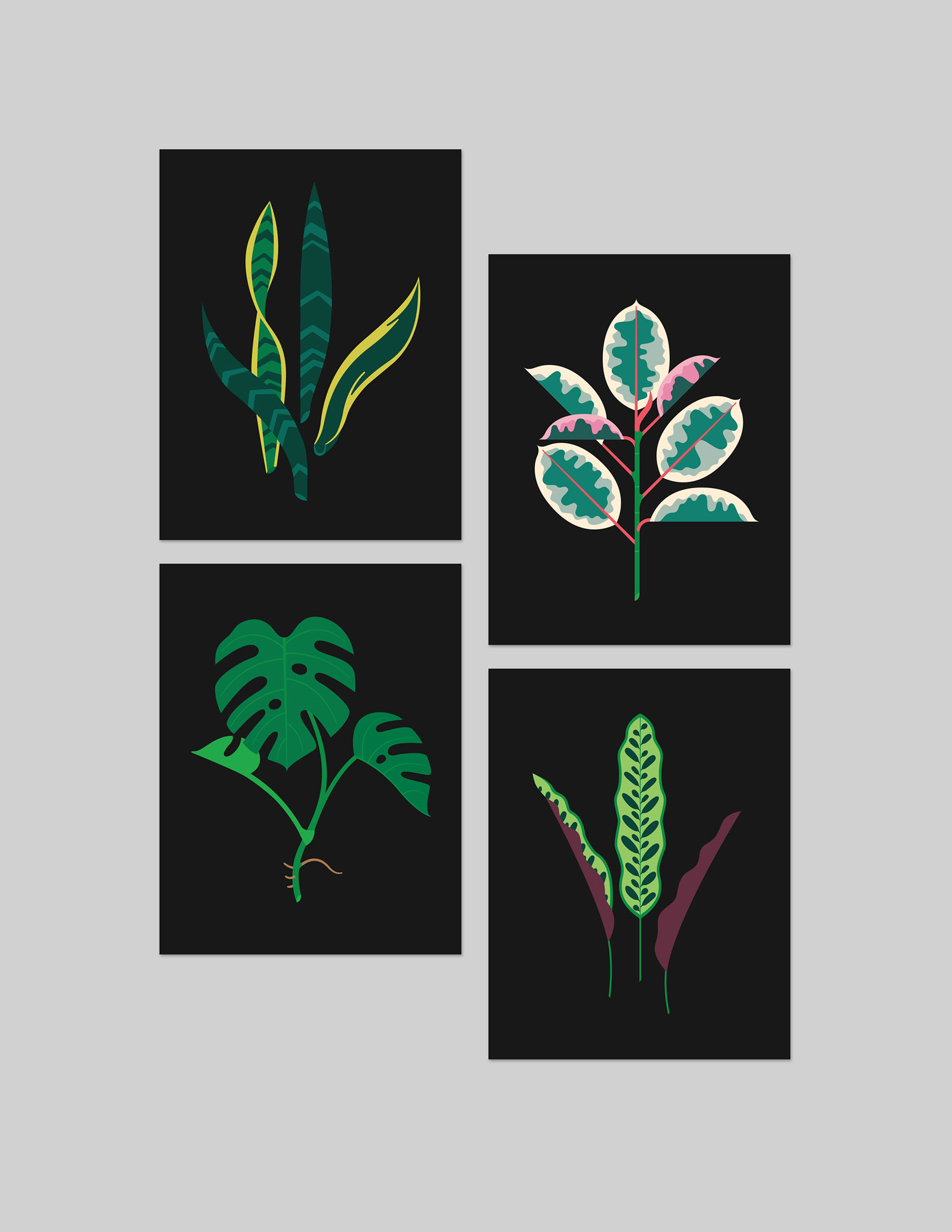
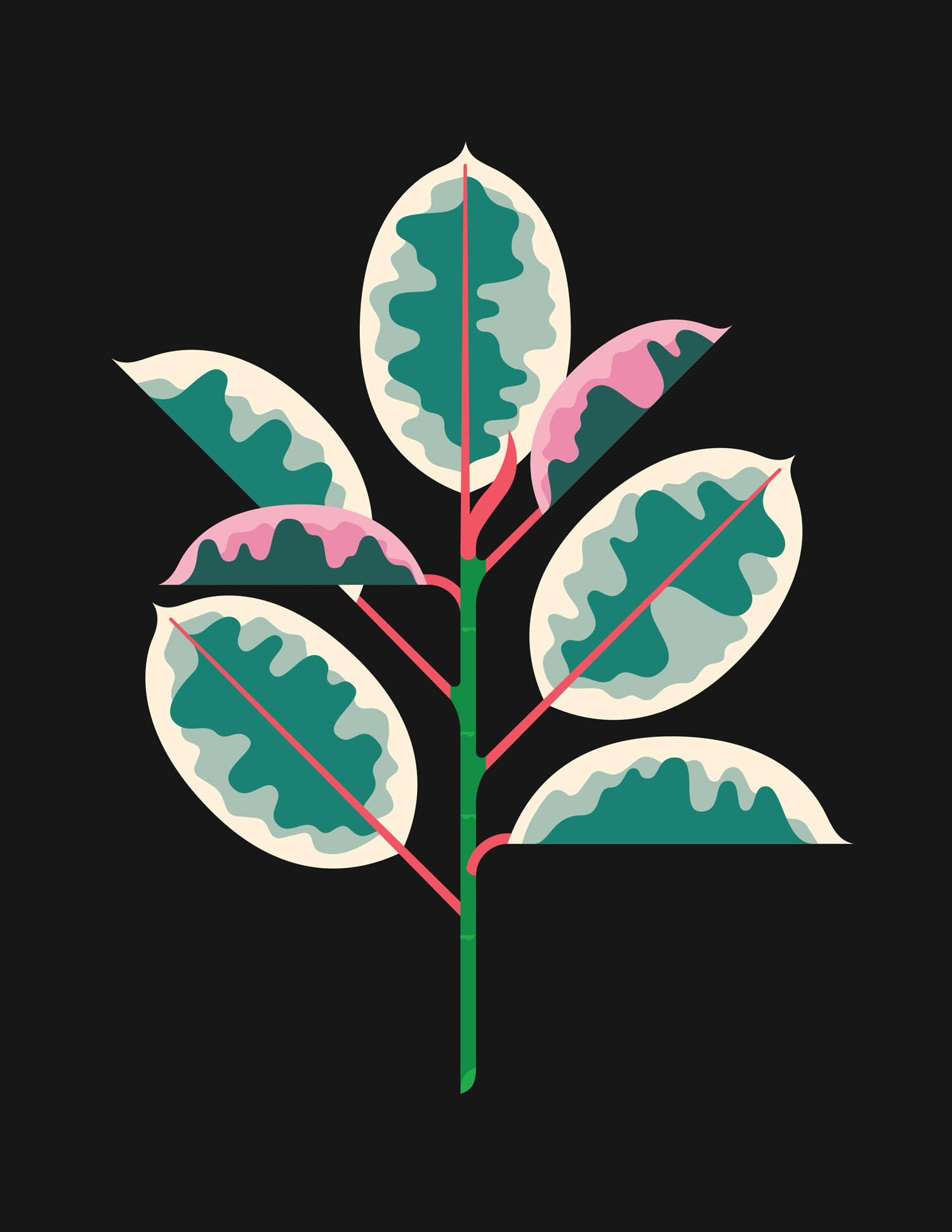
It’s nice that you had someone like that to mentor you about what the next possible steps could be. Do you feel like you had that as well, Tyler? You mentioned that in high school you weren’t really sure what you’d do next, but you eventually ended up in design school, anyway.
T: When I was in high school, I didn’t really have any concrete plans to go to college or to study art. It’s not that it wasn’t my passion, it was more that the idea of going to college just wasn’t something I was used to seeing. I didn’t really know anyone else who went. Some people talked about it in our town, but it wasn’t like it is now, where it’s somewhat expected that you’ll go.
When I was a kid, we’d go up to my grandparents house in the country almost every weekend. There were big bird feeders in the yard, and they had all of these really cool bird books. That’s when I fell in love with animals, and became obsessed with drawing them. I would get a lineup of Safari Cards, and then pull from each one to draw an entire scene with all of the animals in their habitats.
Once I was a little older, maybe when I was about 10, I got really into basketball and would draw NBA logos over and over. (laughing)
E: I wonder if that’s a thing with graphic designers.
Recreating other people’s work?
E: Yeah. Maybe all kids do it? But there’s something in particular about logos. Maybe it’s the starkness and precision of them, that kids are drawn to. I remember trying to perfectly draw the Warner Brothers logo. (laughing)
T: I remember being really impressed with myself when I got the New Jersey Devils logo down.
E: That’s a tough one!
T: I drew that one on my Trapper Keeper probably at least five times.
When I reached high school, I had an art teacher who was a big influence on me. She saw the kinds of things I was doing, and told me that was what graphic design was. I had no idea! You don’t even think about the origins of the things you’re obsessed with as a kid. But they all come from somewhere.
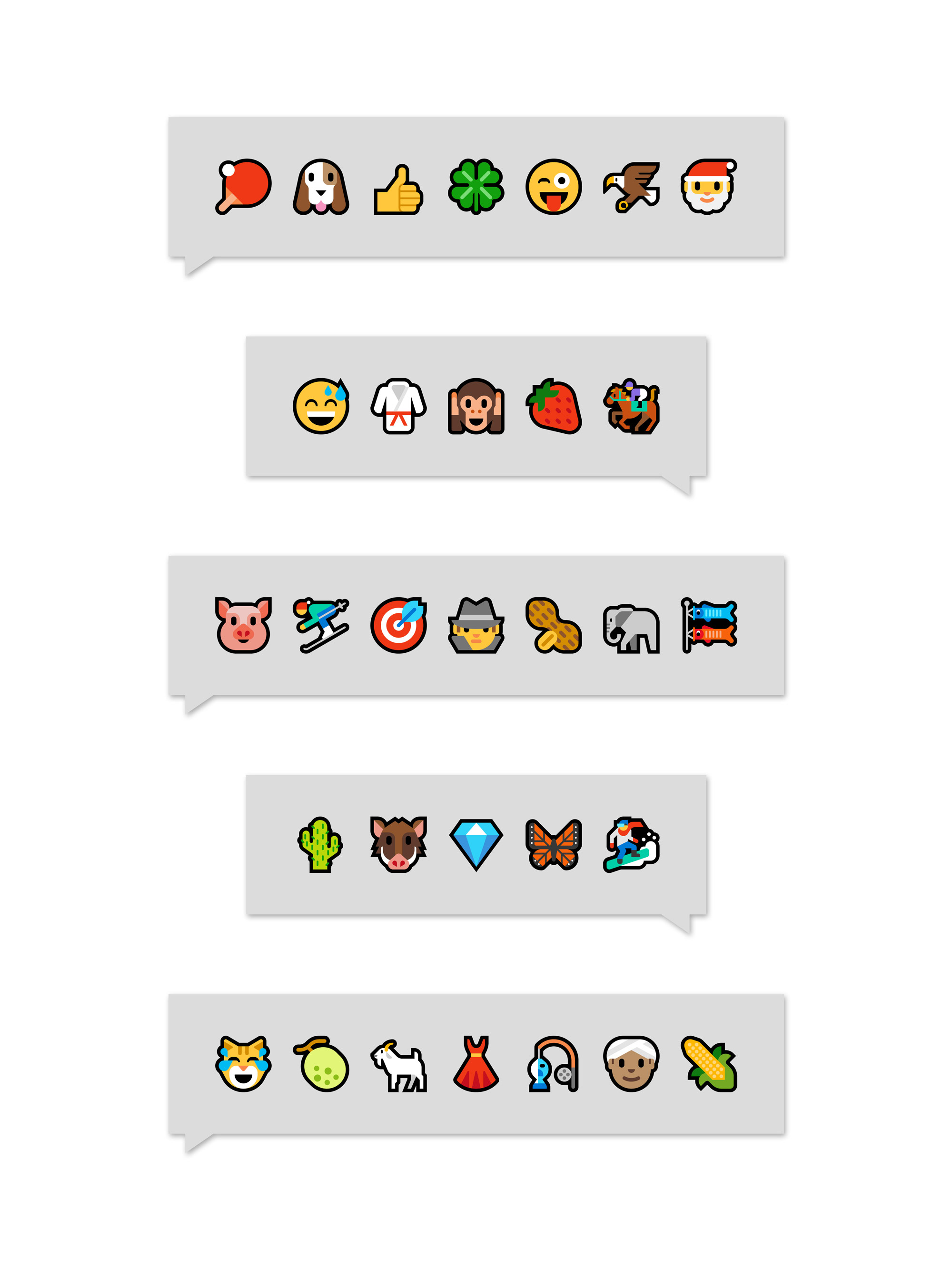
“We have both always loved simplicity and the boldness of iconography, while also having fun and making sure things never get too serious.” /Elsa
Even most adults don’t realize how basically everything is designed. So, you two met in design school. What came first—working together professionally, or your relationship?
E: Our relationship.
T: We had mutual friends. I was a year below Elsa, so we weren’t really in any classes together. But there was a program at Ringling, the art school we went to, called The Design Center, which was like an in-house design firm and internship program for the school.
E: It was this great group of people, all in one room, who learned from each other and shared things like fonts and images. This was pre Google search, so we all had these external drives full of weird stuff. One person would be like, “Hey, I have this new picture, check it out!” It was so awesome.
I love that.
E: Meanwhile, I was just trying to find a way to hang out with Tyler. (laughing)
T: Unbeknownst to me.
E: There was this board at school where the work of underclassmen was posted, that everyone could look at. And with Tyler’s projects, I began to make the connection between cute boy and nice work. (laughing) And it just went from there. We always had a mutual admiration for each other, and each other’s work. Along with our friends, we also critiqued each other’s work and helped each other out. We didn’t formally work together, though, until after we graduated.
T: All of the extraneous stuff came naturally to us, because we were already in a relationship and trusted each other’s instincts and feedback. So much of working together is about the smaller things; giving honest critiques and knowing how to help keep someone else in the right lane.
E: Not taking anything too seriously became really important for us. Taking a critique for what it is, knowing it would make the work better. There’s a lot of ego in our industry, so you have to learn to leave it at the door. The most important thing is making good work. So you’re just constantly checking each other to make sure that’s what’s happening.
In a way, you’re acting as thought partners for each other. How did the two of you land on the distinct style that Always With Honor is so well known for, assuming each of you came to this collaboration already having a style of your own?
E: It took a few years. We have both always loved simplicity and the boldness of iconography, while also having fun and making sure things never get too serious.
T: It may look like we have one illustration or design style, but we feel that there are multiple styles in our palette, which all kind of fall under the same tone umbrella.
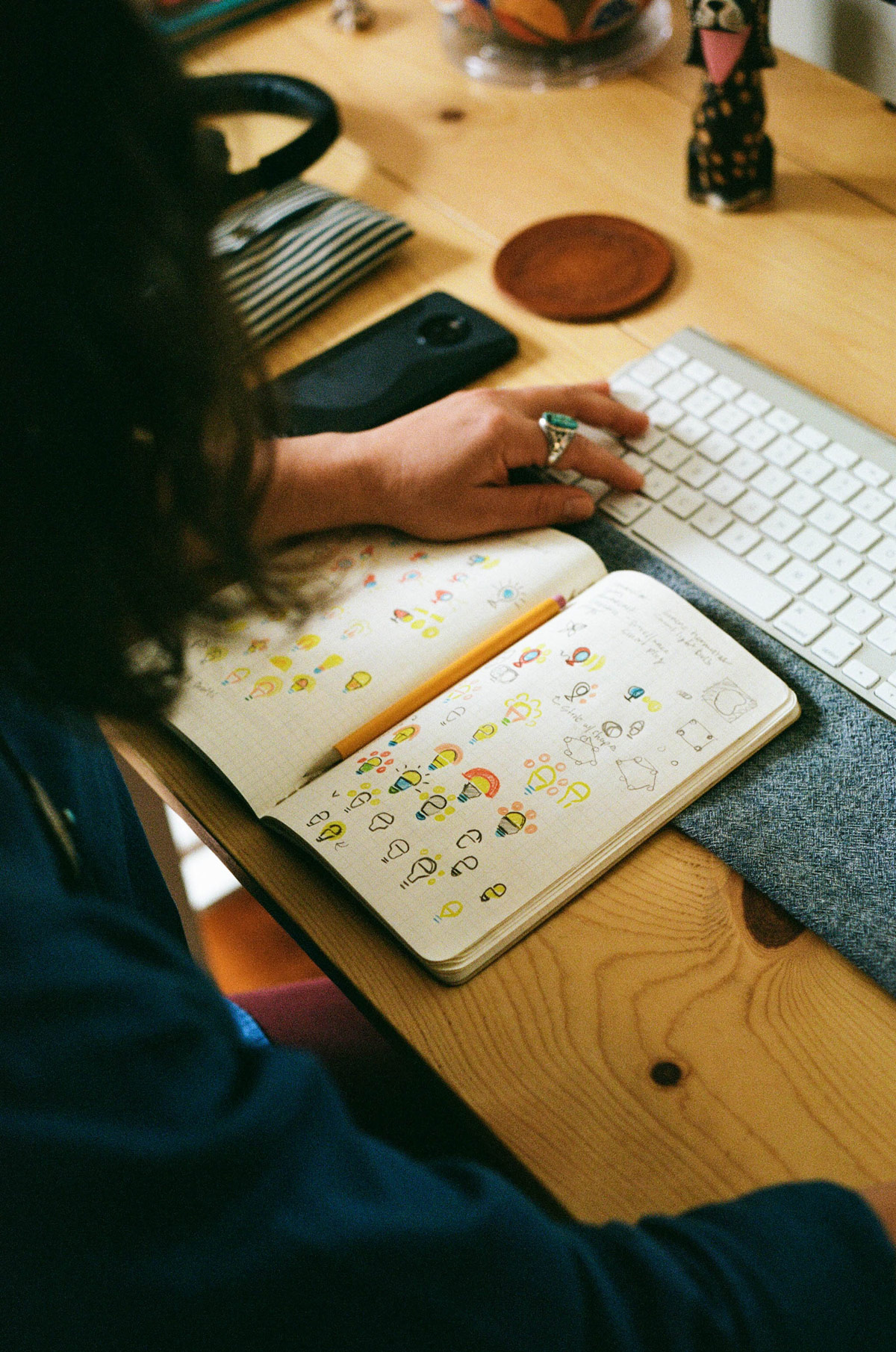
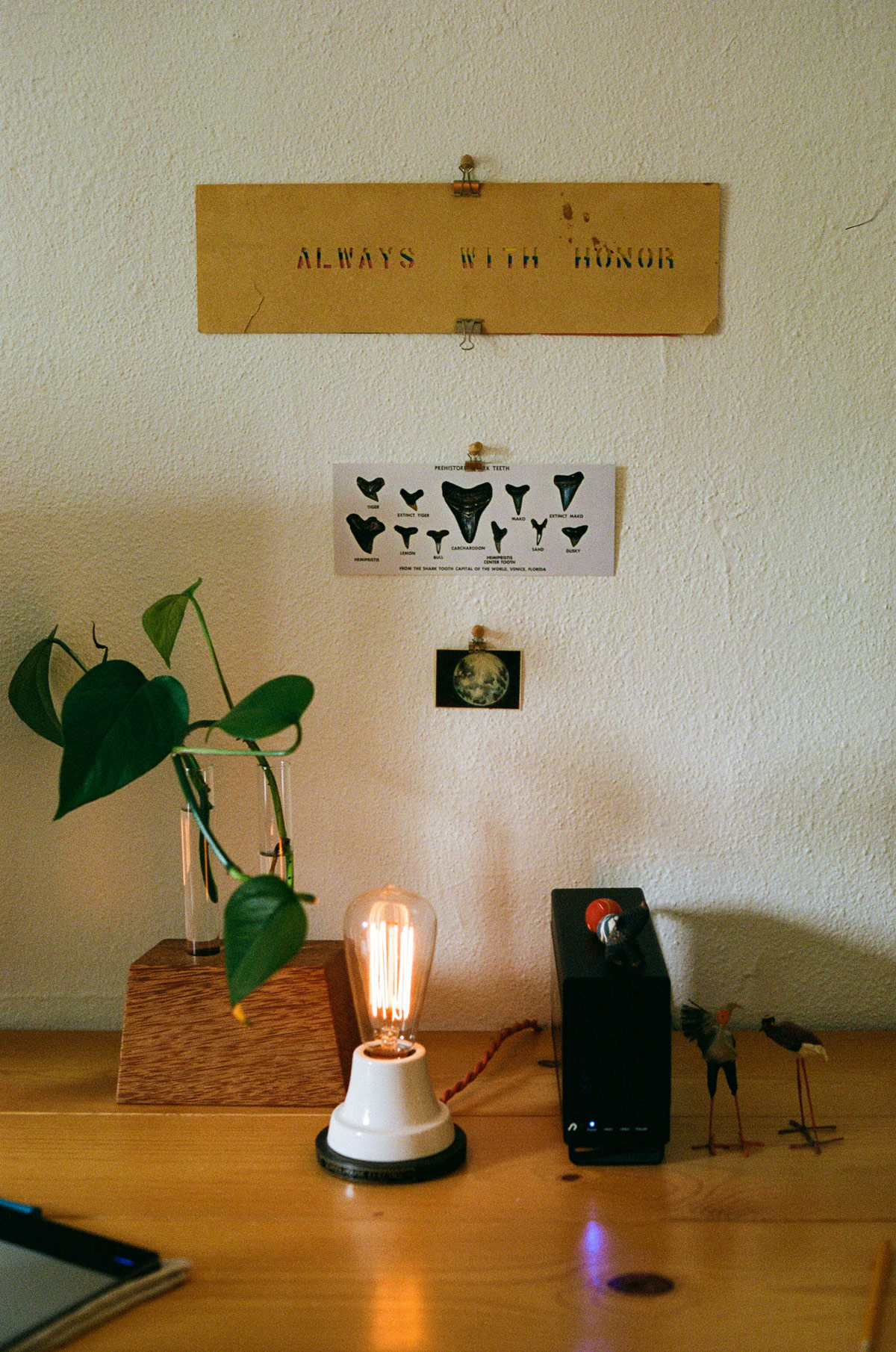
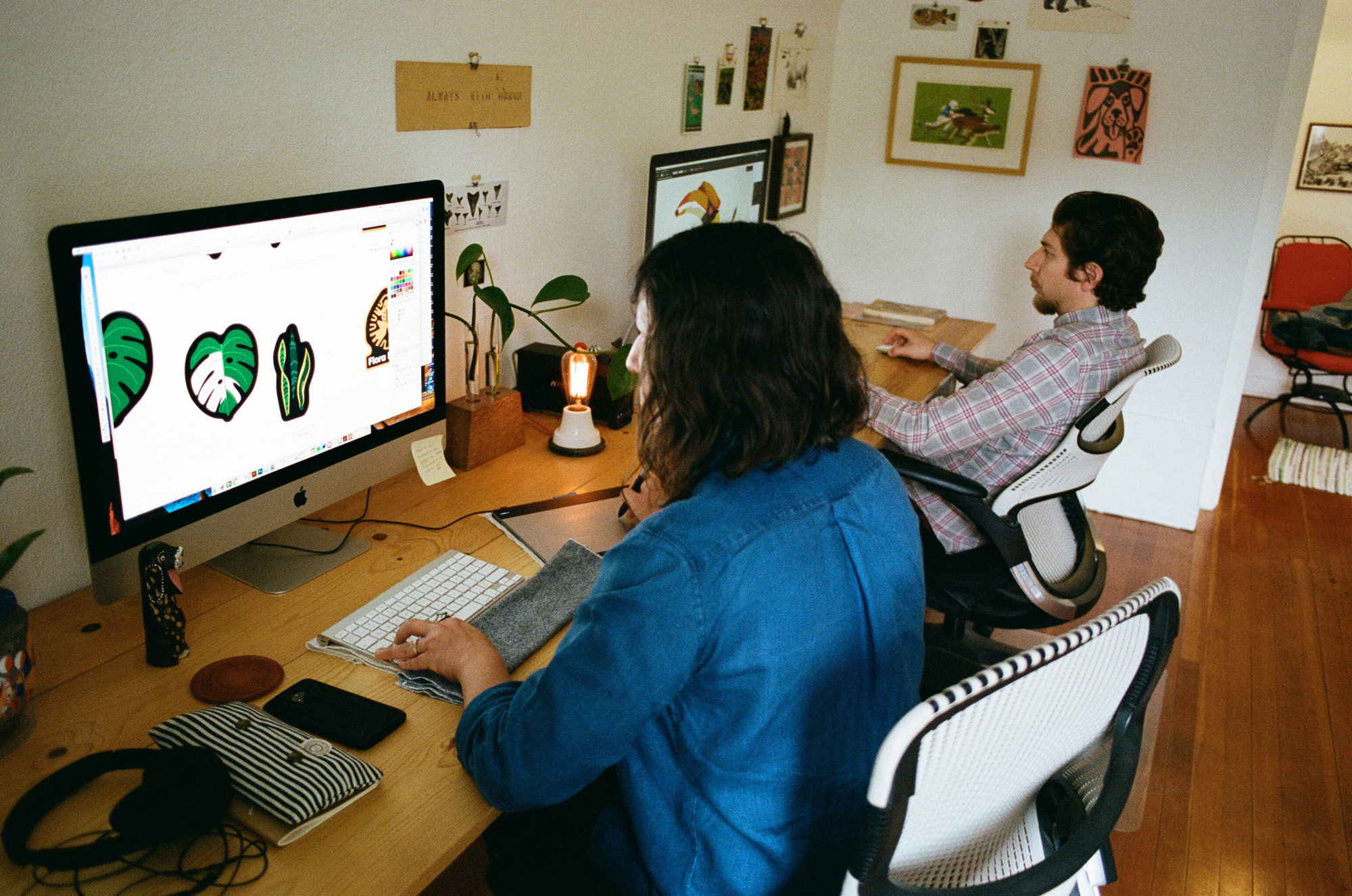
“Our company, and our work, is important to us. But, our marriage is number one. We don’t want to get burnt out to the point that we can’t stand to look at each other anymore. (laughing)” /Elsa
Aside from the tone that ties everything together, do you feel like some of what you create is more “Elsa,” and some is more “Tyler”? Or do you feel like the lines are somewhat blurred and it’s hard to make a clear division?
T: It feels pretty blurred at this point, but there’s still a lot of room to explore within the tone we’ve established.
E: The animal illustrations are all Tyler. He’s been working on and evolving that style for years. I don’t have a hand in that, physically, because that’s his thing. But, I do have a hand in them in other ways.
In an art direction sense?
E: He’ll be working, and show me five different fern sprigs behind this bird. He’s already been looking at the thing for four hours, and I can just look at it quickly and say, “Number three.”
So it’s more about perspective.
E: Yes. So much of it is that.
T: You can only question yourself for so long before you’re incapable of making the right decision.
E: And we think of ourselves as more of a design studio than an illustration studio—we’re graphic designers who can kind of draw. Design is our number one, and we both touch every design project that comes through Always With Honor.
T: We pass every project back and forth, because with design, you’re already working within a certain system that has parameters and rules. Once that’s established, anyone should be able to come in and build off of that system. Design allows us to be more collaborative; it’s different with illustration.
“You don’t even think about the origins of the things you’re obsessed with as a kid. But they all come from somewhere.” /Tyler
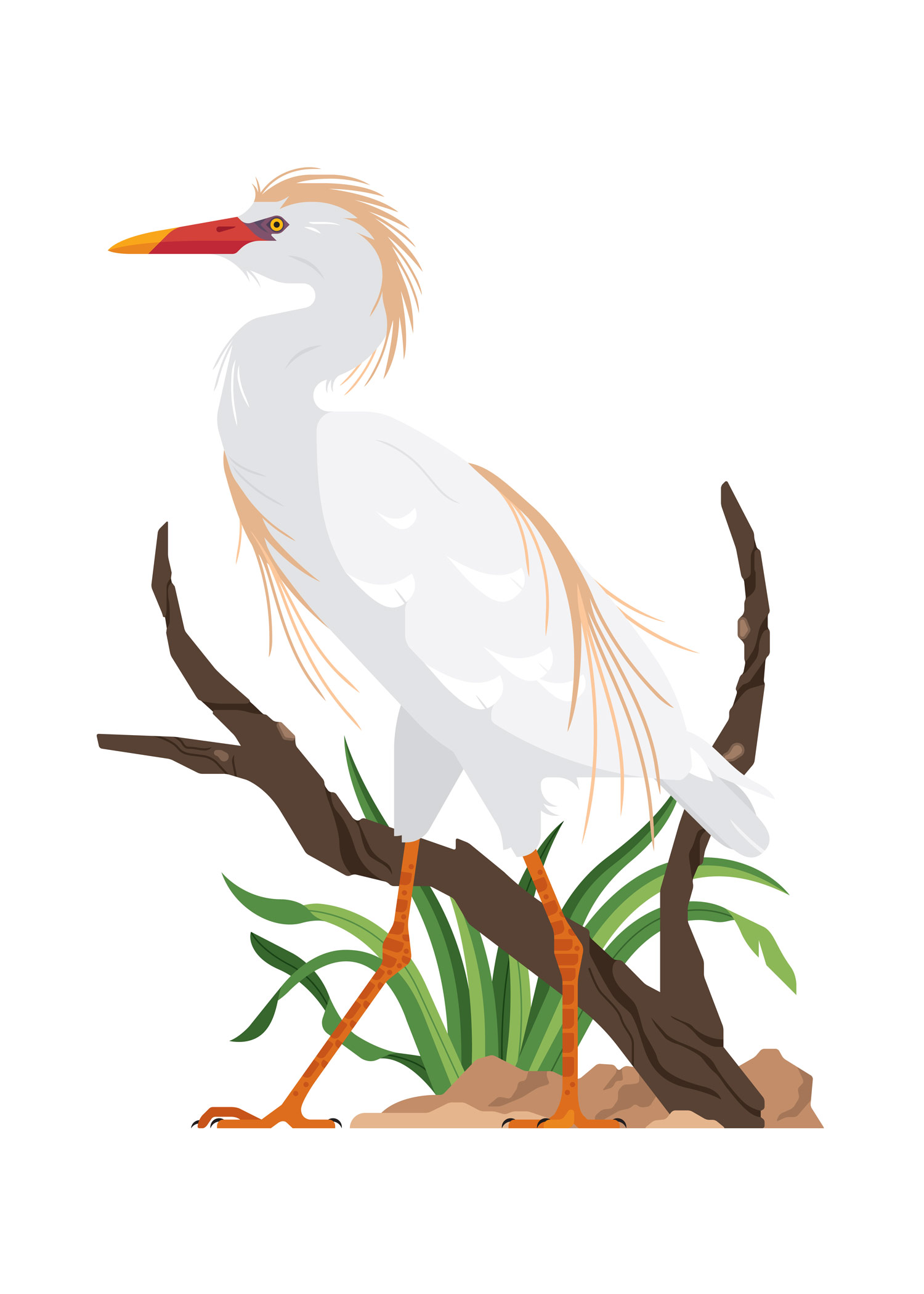
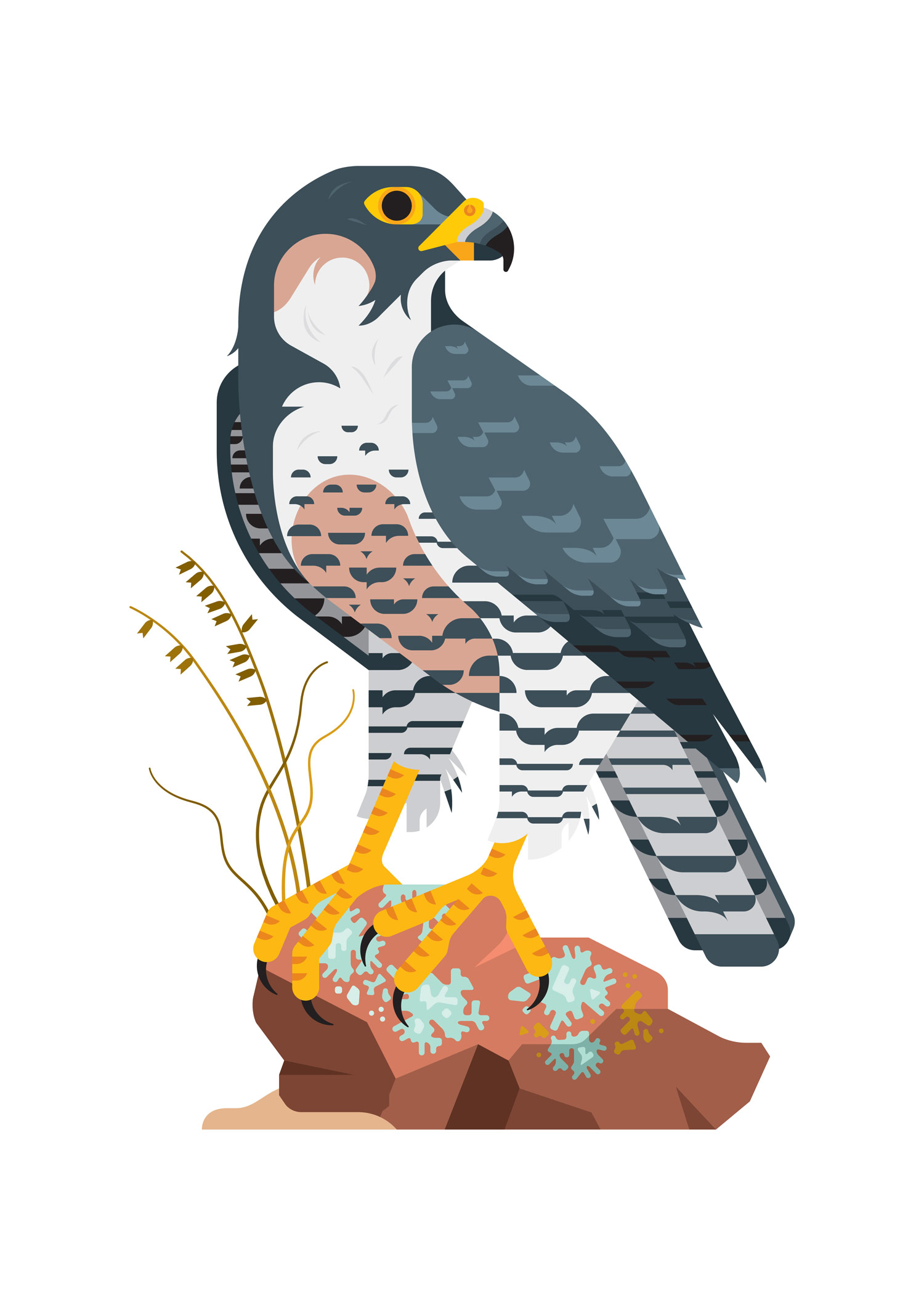
It’s nice that you have such a good system set up for working with each other, and have that level of mutual support. So often, freelancers are working on their own, in isolation, and don’t have anyone else to check their thinking or hold them accountable.
T: You need somebody to keep you in check and to keep you from going crazy.
E: And sometimes, just to tell you when to stop. That might be one of the most important things. Tyler will look over and say, “I like what you’re doing right there.” Meanwhile, I was about to take the design in a whole other direction, and add a bunch of stuff to it. I would have just kept going down a rabbit hole, so it’s really helpful when someone else can come in and tell you to stop pushing something around. To tell you it’s finished.
T: You need someone else to relieve you of your burden.
E: Waldo is also part of that team. (Looking over at Waldo, Elsa and Tyler’s basset hound.) At 5pm he’ll come and put his head on my lap, and it’s like he’s saying, “It’s time to be done!” I recommend having a pet, especially a hound dog. They don’t mess around with long work days.
Ha! Yeah, he definitely doesn’t look like he does. As partners in your personal and professional lives, you live together and work together, and you also work from home. What does a typical day look like for you?
E: It sounds like a lot when you say it out loud like that.
T: We’re pretty early risers, so we usually get up around 6:00 or 6:30.
Is that because of Waldo?
E: Waldo can go either way. (laughing) He’ll stay in bed with the person who stays in bed the longest. He’s not the kind of dog that’s like, Alright! I’m up. Take me out!
We get up pretty early on our own. I’d like to say that we do something mindful, and have a smoothie or something, but … (laughing)
T: You do go to yoga.
E: I do. I guess that’s my mindful thing. I’m a morning person, so by the late afternoon, I’m done. I have to do important work early on, otherwise I just can’t focus anymore.
T: I’ll usually get up and make coffee while she’s out at yoga, and coax Waldo downstairs. We’ll both go out, and I’ll walk around the yard for a while. It’s really nice in the summertime, because I get to water the plants—there’s nothing more relaxing.
E: That’s your Zen time for the day. And then we usually get going on work around 8:30 or 9.
T: I think it first started when we moved to Portland from NY in 2009. Being on the West Coast, there’s this feeling when you wake up that you’re already behind schedule.
E: You wake up to a ton of emails, and things are already going on.
T: We’ve always been early risers, but that kind of informed our schedule. And it just stuck.
“You can only question yourself for so long before you’re incapable of making the right decision.” /Tyler
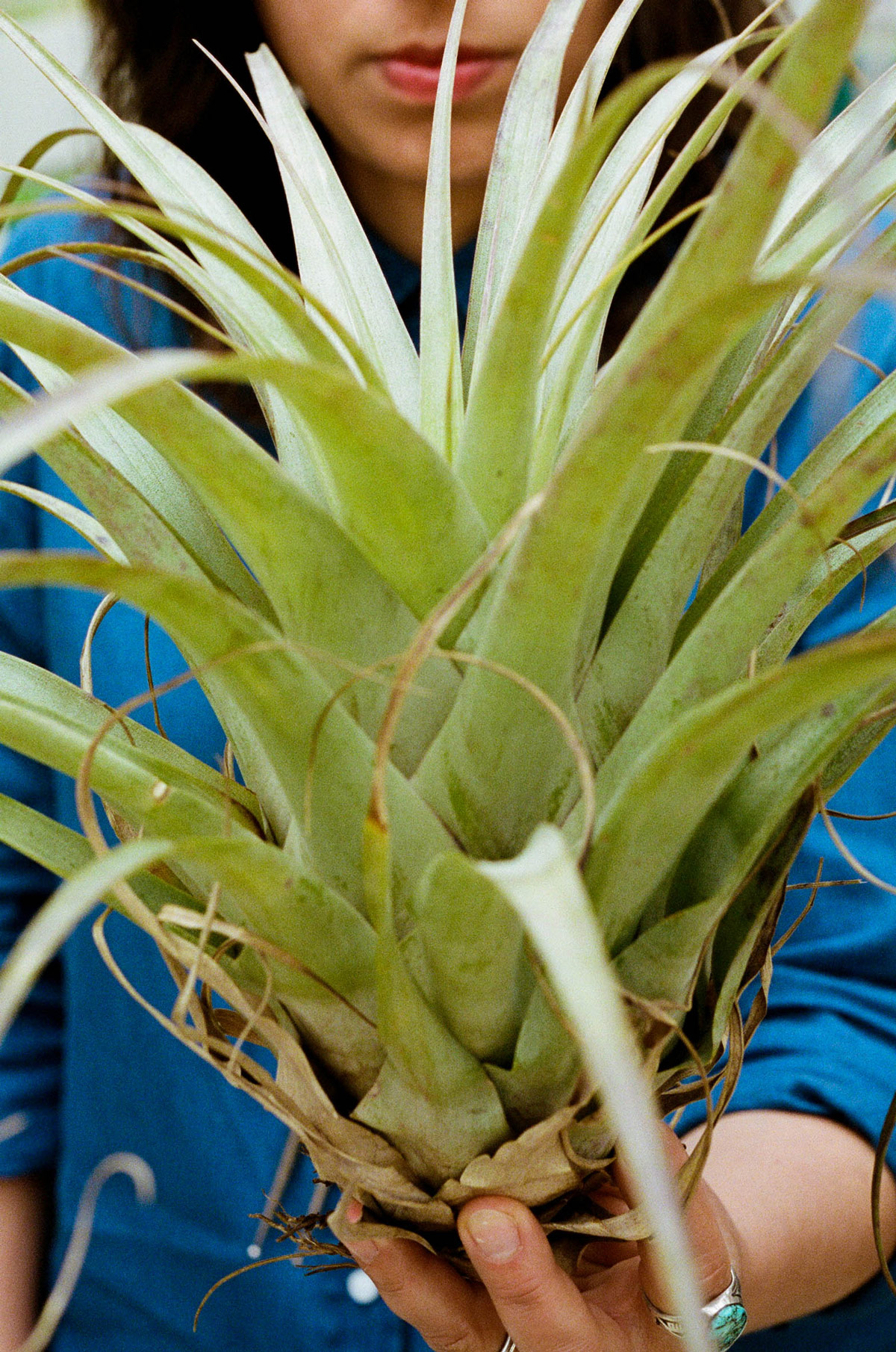
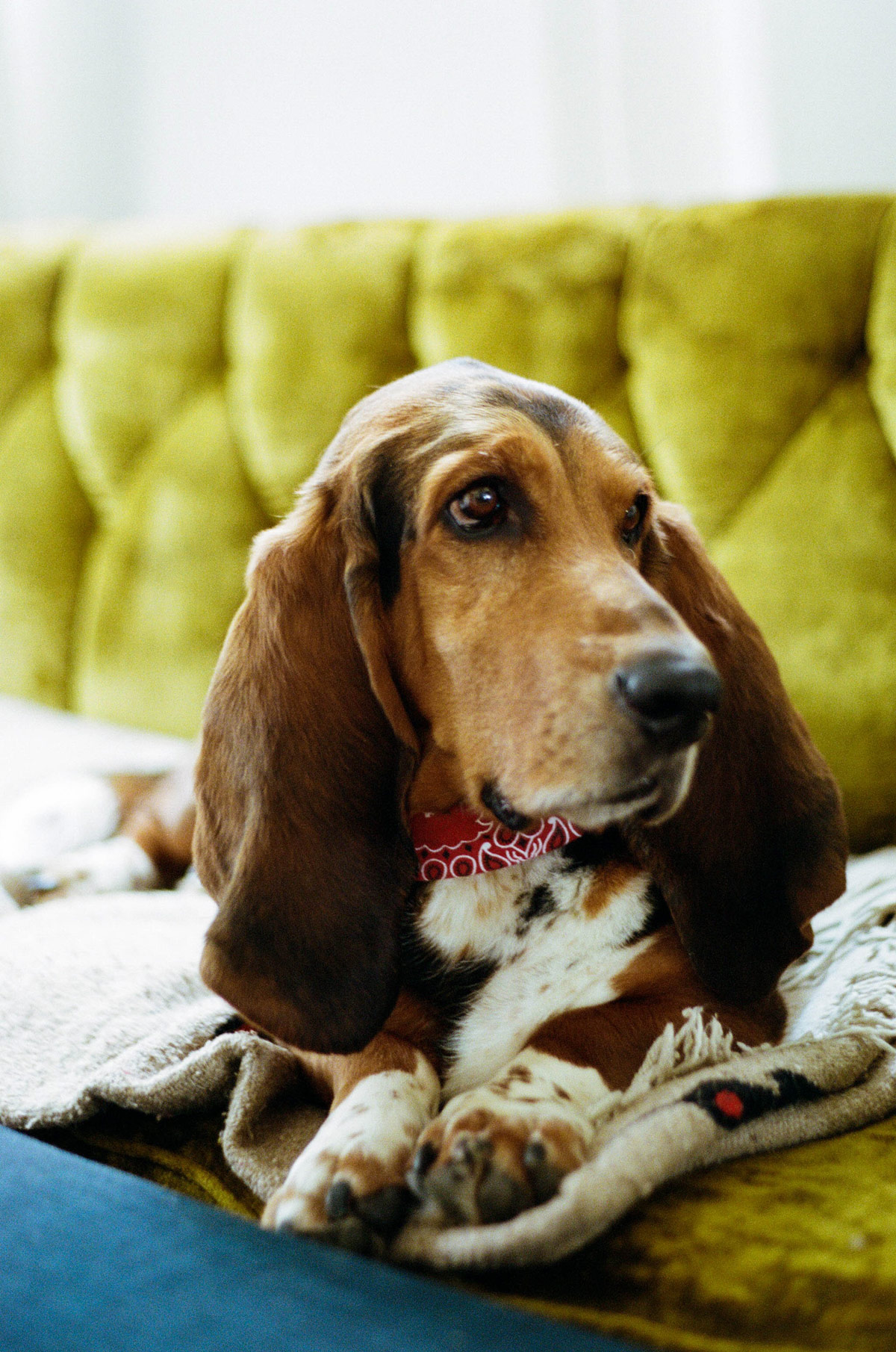
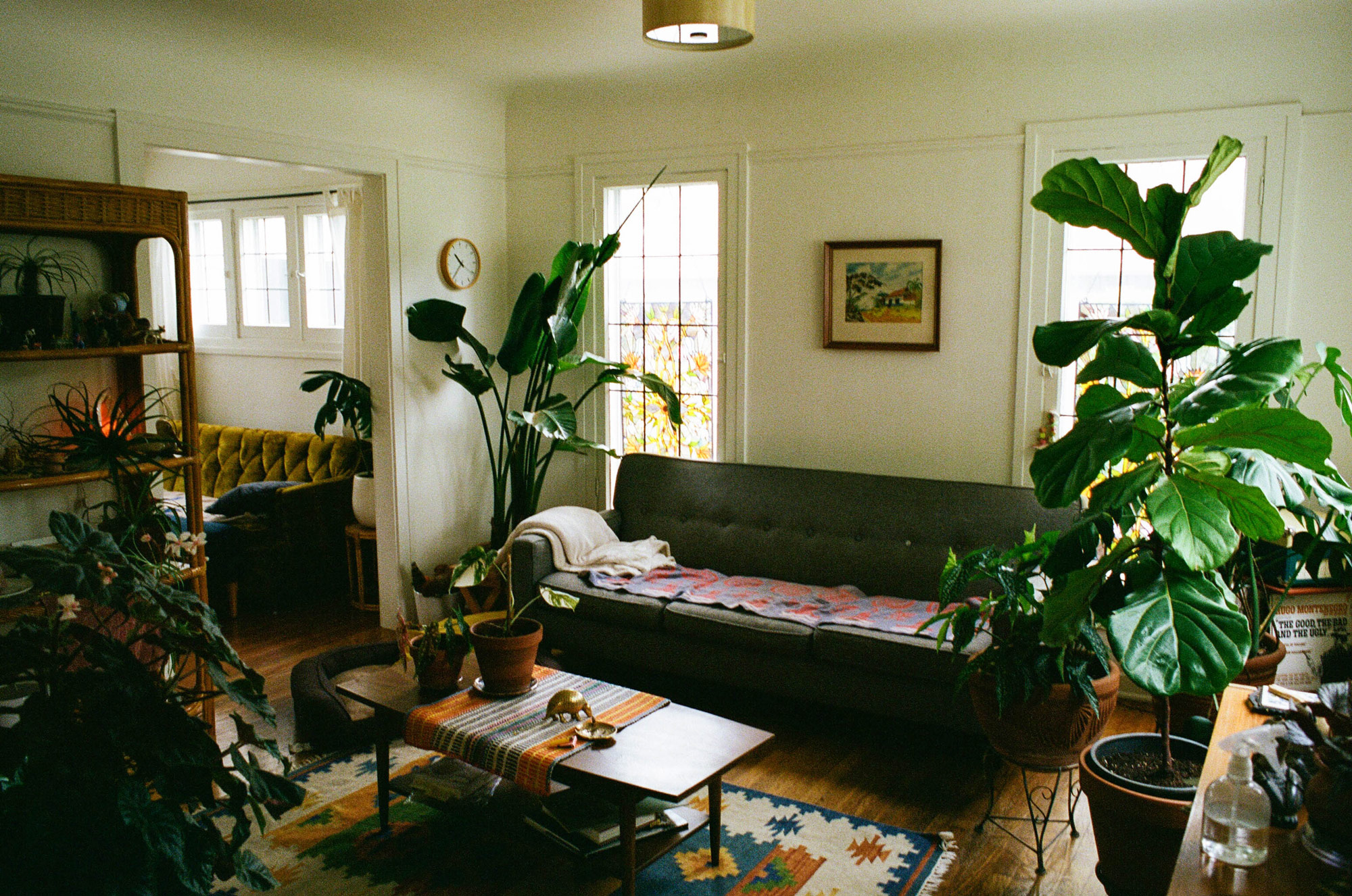
And how do you spend the rest of a typical day?
E: Our setup overall is pretty simple: we work in a room in our home; we have one desk; we sit next to each other; we have separate headphones, and we each listen to our own weird music; we talk and chat while we’re working; we cook lunch; and then we eat at our desks, because we’re bad like that.
T: Summer is a whole different thing.
E: Yeah, once it’s nice out, we start eating lunch in the yard. We usually work until about 4 or 5pm, and our afternoons are mostly spent outside.
T: Once we get done with work, we have to get out of the house.
E: We usually go to a brewery, or meet some friends, or go on a bike ride. Whatever we do, we have to leave the house—otherwise it’s too much. We love our home, but we’re here all day. And we love Waldo, but he’s also a little intense.
We used to stress out a lot. After college it was just work work work. Living in New York, the idea is that if you’re not working, you’re not productive. But productivity is so much more than work. That doesn’t mean Tyler and I don’t ever watch videos on YouTube or mess around; it means we do our best to make the time that we’re working, work best for us. We don’t work late at night anymore, or overbook ourselves—we manage our time so we don’t have to. Our company, and our work, is important to us. But, our marriage is number one. We don’t want to get burnt out to the point that we can’t stand to look at each other anymore. (laughing)
You’ve put in your time.
E: Yes. But also, we need the longevity. It’s doubtful that we’re going to retire—we’d like to be able to do this for the rest of our lives, so we can’t burn the candle at both ends now.
T: That can be hard, though, too. You wonder sometimes if you’re wasting opportunities.
E: Sometimes it means we have to turn down really great projects. It’s a constant struggle.
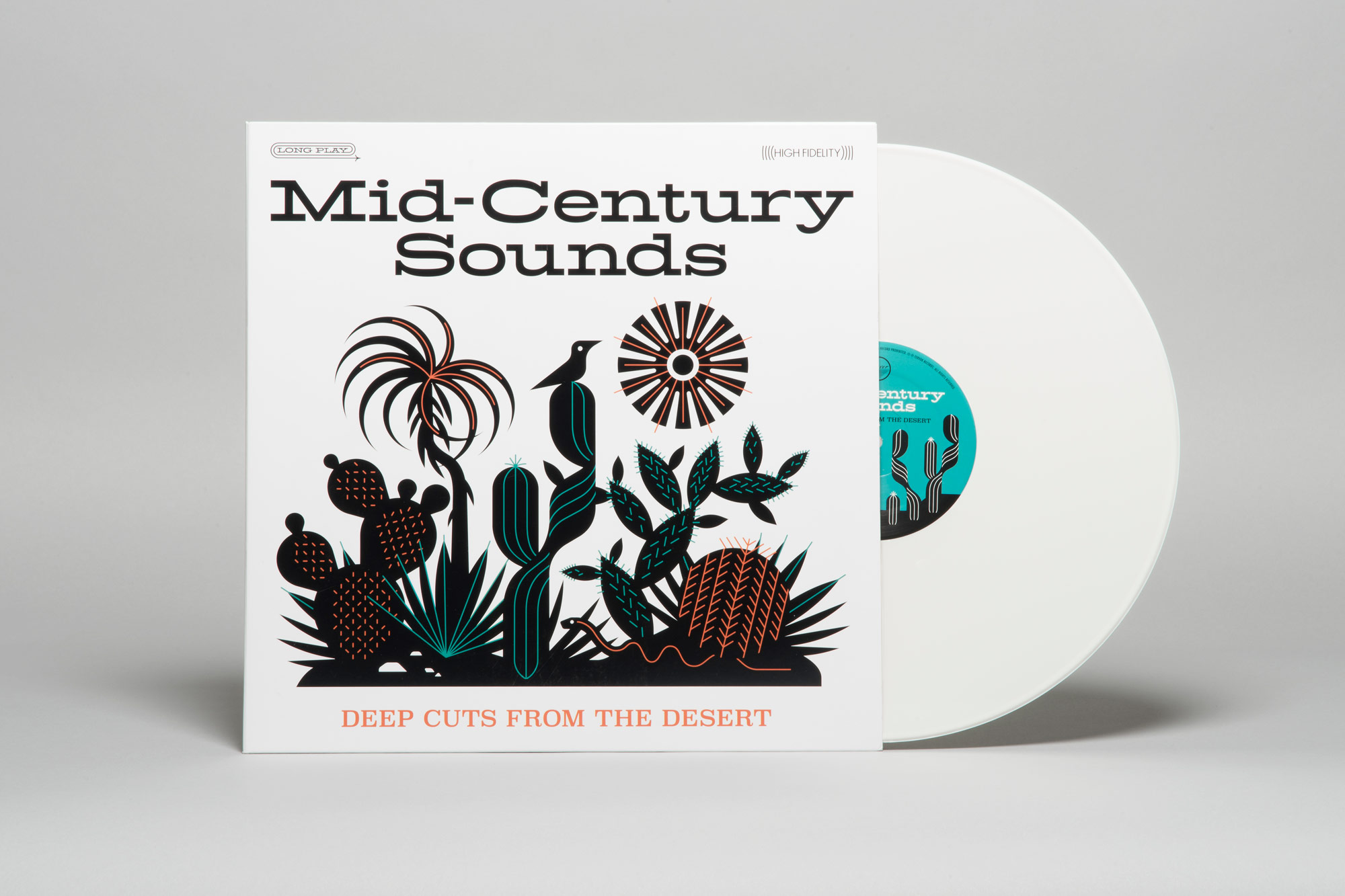
Definitely a commonality amongst people who work for themselves. You really have to craft what your future will look like; no one else is going to do it for you.
E: Exactly. People will ask things like, what are you guys going to be making in the third quarter? And I want to say, “You tell me! I have no idea.” It should worry us more, but we’ve gotten so much better at understanding the idea of peaks and valleys. When you’re in a peak, you work. When you’re in a valley …
T: You stress about not working. (laughing)
E: You try not to do that. (laughing) We used to be really bad about it. Now, we work on the house, or on self-promotion, or post stuff to our Instagram, update our website, or even take time off.
T: It only took us ten years to figure that out.
I want to talk about those valleys for just a moment. We’re sitting in your beautiful yard, which feels like a mini outdoor sanctuary, but it’s also the home of another project of yours—Flora Noble. What was the impetus for starting that business, and in what ways does it compliment the work you both do at Always With Honor?
E: I’ve become more of a plant lady as I’ve gotten older. I grew up around gardening and farming—my grandfather was a mango and sugarcane farmer, and my grandmother and mother have beautiful gardens—but I didn’t appreciate that until I left home and lived in NY. Ever since then, I’ve been building my own garden. Basically, just trying to outdo my mother. (laughing)
The truth is out!
T: Our back yard was originally a burden—the previous owners had used it as a gravel parking lot. But it gave us another way to focus our energy.
E: And to not be on the computer. With plants, you have some amount of control, but everything is still pretty much on its own timeline. You can’t rush a plant into growing. With gardening, you have to learn to let go of a lot.
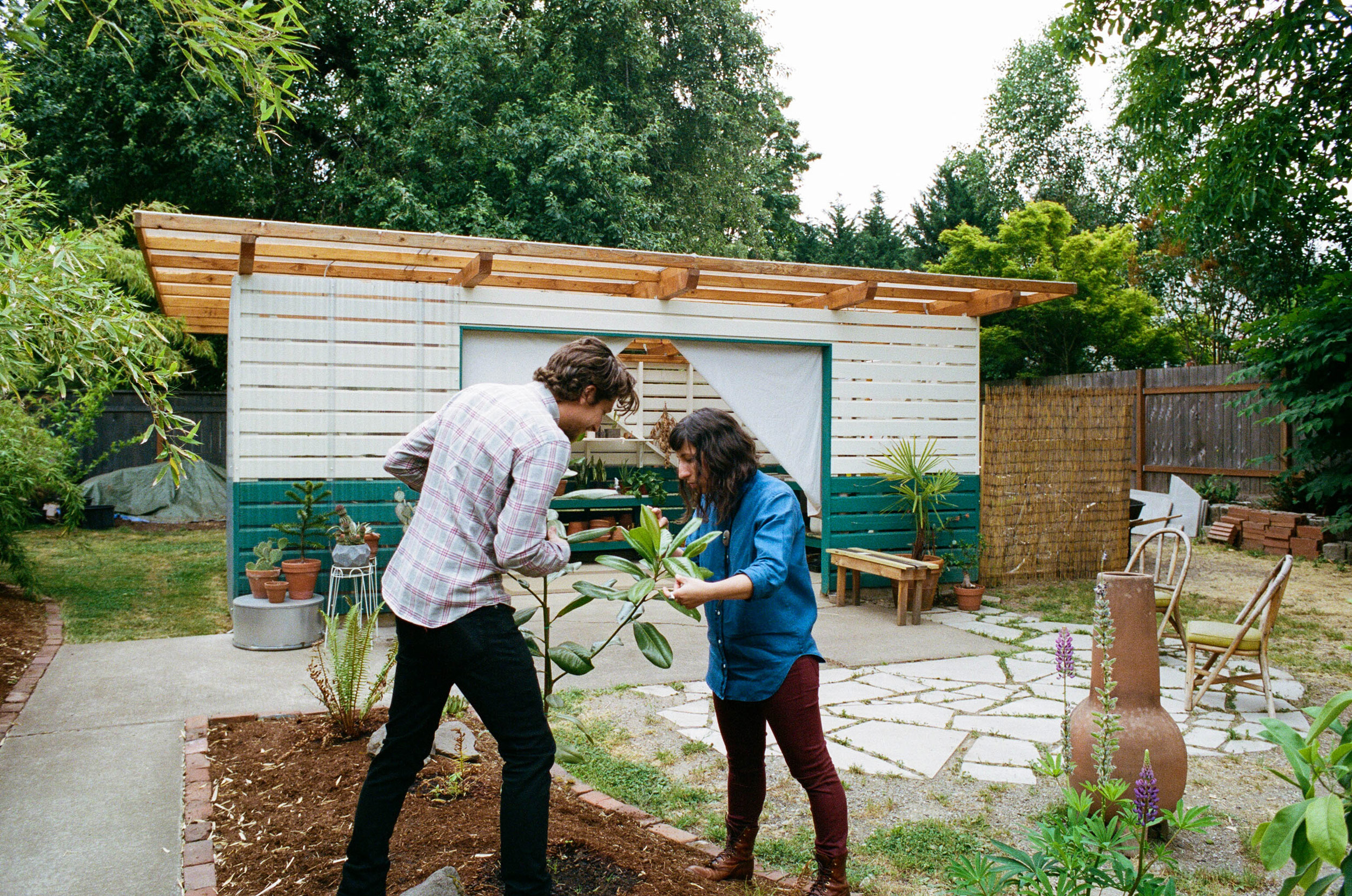
“There’s so much wonder and beauty in nature. Just look at a leaf—you can’t design one more perfectly than it already has been.” /Tyler
How did you turn your love of gardening into a plant studio?
E: Things were slow at Always With Honor, so I went to Tyler and told him I had been thinking of taking this eight-week master gardener course. At the end, you receive a certificate in horticulture. He was like, “Of course, do it!” And that was all the motivation I needed to go ahead with it. So I did.
It was also great, because at the time Tyler and I were trying to figure out what to do with this yard. And it’s also when our friends started asking us if they could borrow plants from our crazy collection for their retail spaces and events. Since then, it’s sort of morphed into an extension of our design studio. We help people learn about plants through workshops, and we collaborate with others and bring art by people we admire into the space we’ve built for Flora Noble. It’s been a great way to just do something different.
T: This is probably our fifth side business. We’re always trying out weird little projects, but this one definitely has more legs.
Do you think that’s because you’re already so inclined toward nature, both personally and professionally?
T: There’s so much wonder and beauty in nature. It’s the highest form of design. Just look at a leaf—you can’t design one more perfectly than it already has been. Every single curve and notch has a specific role and purpose. And as a designer, you’re always trying to uncover and chase that kind of perfection in your own work.
E: Nature was a big part of both of our upbringings. So that’s part of what drove Tyler and I together, and one of the reasons we moved to Oregon. There’s a joy in being surrounded by flora and fauna. If you can’t be out in it all of the time, why not draw it, or make it a part of your work? So that’s what we try to do as much as we can.
I love what you said about nature already having achieved the perfect design. But that makes me think about scale, and how nature has had so much time to iterate and perfect its designs. As designers, you’re trying to do the same thing in a seriously condensed period of time. It kind of takes the pressure off.
E: I like that. It really does take some of the pressure off when you think about it that way.
T: You know that file I’ve been working on? Let’s just go ahead and send it. (laughing)
“When you finish a project, the satisfaction comes less from feeling full, and more from this good kind of hunger that arises.” /Tyler
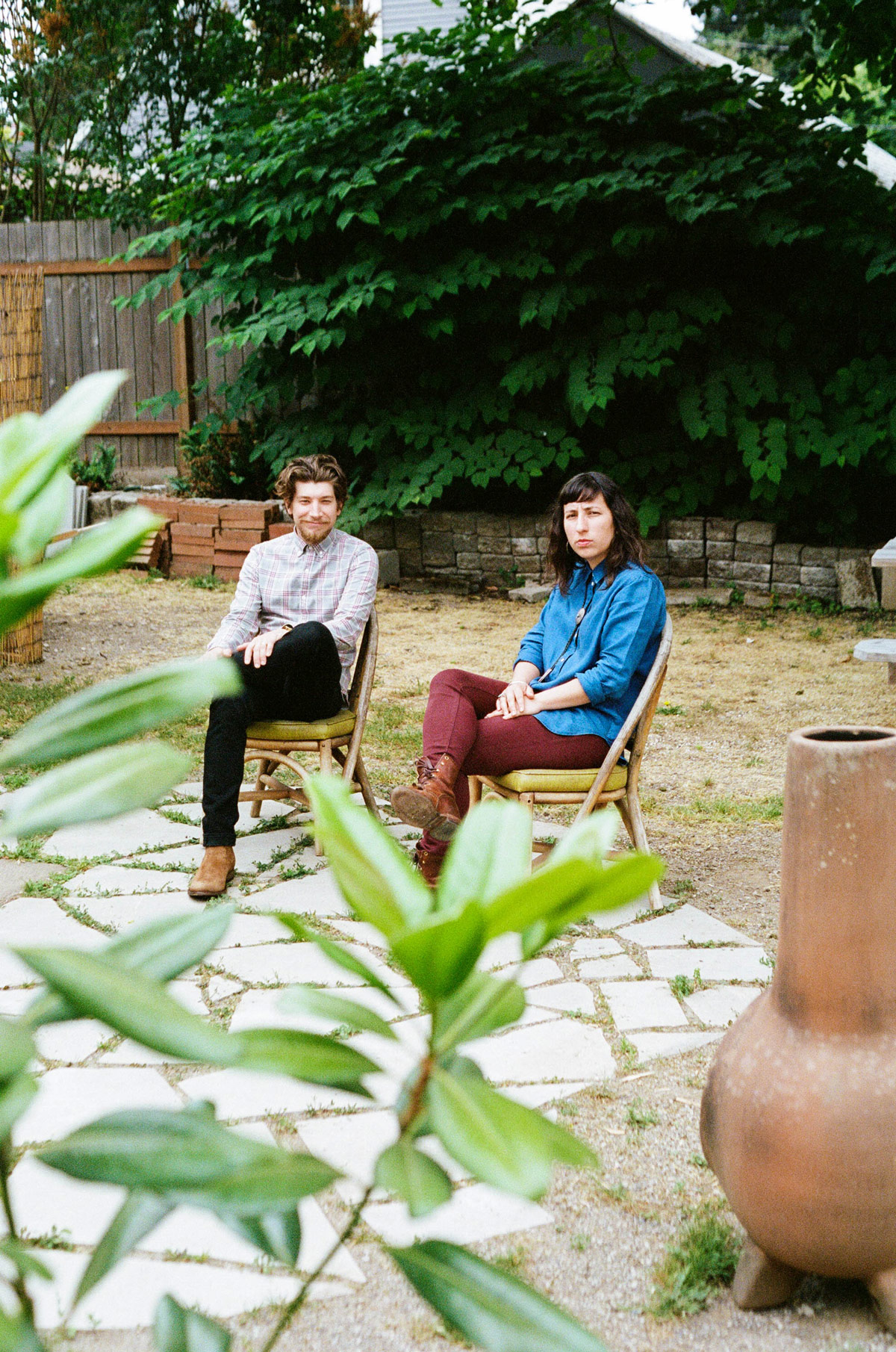
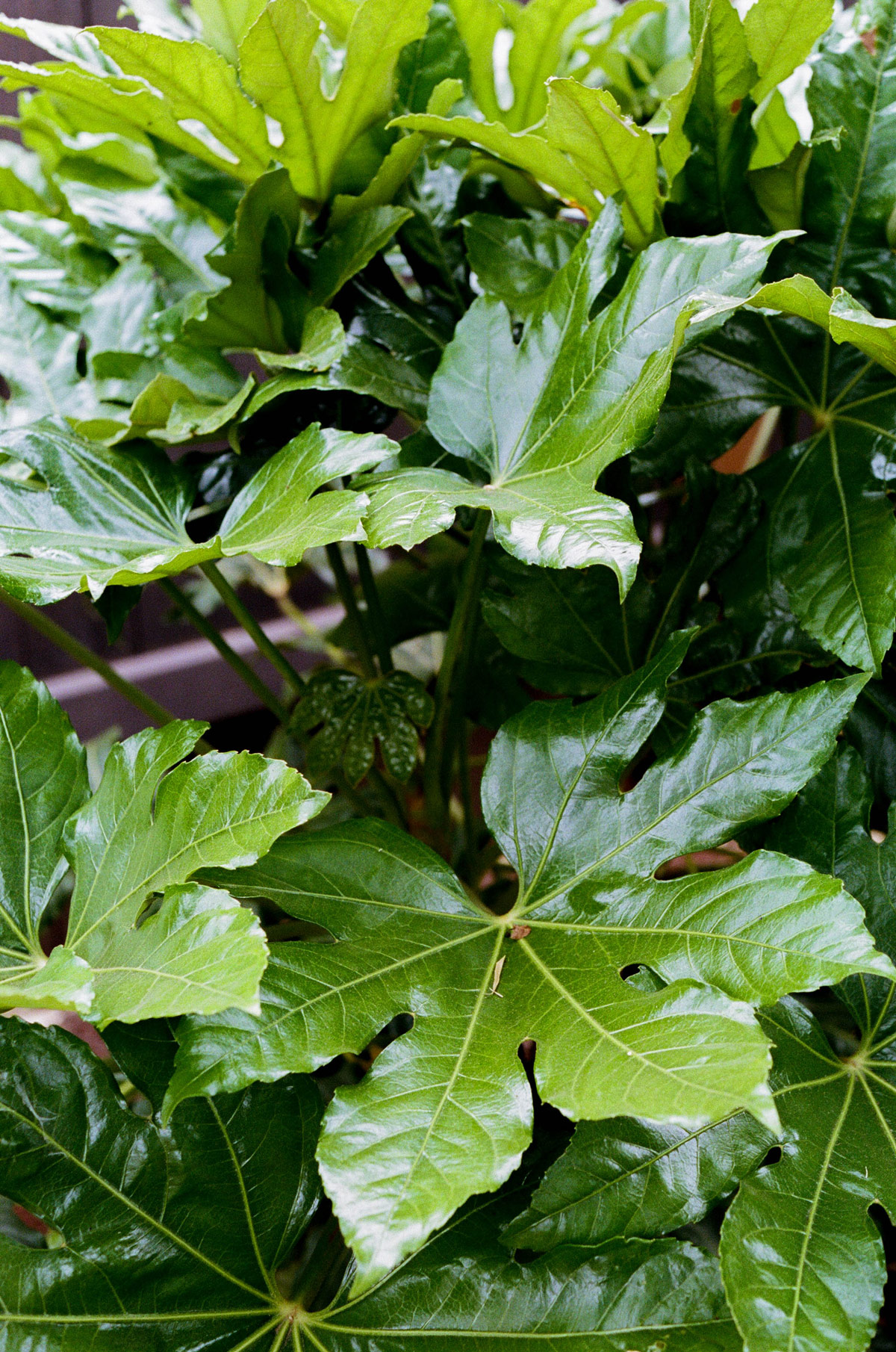
There’s so much to learn along a path like this. What advice would you give someone who’s just starting out in design, that you wish someone would have once given you?
E: Always With Honor came out of our mutual love for things outside of our work. So even if it’s probably what most people say, I would tell them to just make stuff, and to do the things they enjoy. We tell students that even if they’re not doing what they want to be doing in their day jobs, they should make time to do those things outside of work. If you love to draw, sit down and draw the Legend of Zelda logo over and over and over, if that’s what you want to do. I mean, why not? Do it, and see how that builds into something else.
Knowing that you’re both hoping to stay in this game for a lot longer, do you feel creatively satisfied right now?
E: Yes, and no. I’m satisfied to be doing what I’m doing right now, but as a creative person I don’t think you’re ever totally satisfied. You’re always on the search for the next great thing.
T: When you finish a project, the satisfaction comes less from feeling full, and more from this good kind of hunger that arises. It’s a reason to do more. We get a lot of joy out of being creative people; I think it would be terrible if we were ever totally “satisfied”.
“We get a lot of joy out of being creative people; I think it would be terrible if we were ever totally ‘satisfied’.” /Tyler
